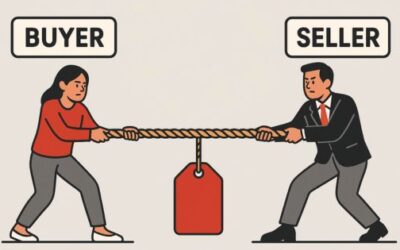Win rates are one sales metric that may stand alone as the single most important KPI. However, a staggering number of organizations struggle with alarmingly low win rates. Like 15-20%, low. These disappointing numbers typically have a single root cause: too much traditional seller-centric data and not enough buyer data. Let me explain.
Understanding Low Win Rates
What we’re told is the problem
Too often when a team is suffering from poor conversions, sales gurus tell us sellers don’t have the skills to close the way they should, they rely too much on automation, or that sellers are too dependent on sales tools. Maybe, but from our vantage point, there’s a much more glaring issue.
Buyer Input Data
The real issue often lies in a lack of focus around buyer input data. What do i mean by buyer input data? This is the specific, unique information that the buyer gives us in a discovery that opens up the vault to their challenges AND why they need to change.
Seller input Data
In contrast, seller input data, focuses on general information that is deemed important by the seller. Traditionally, this includes budgets, decision-makers, sales stages, etc. The problem with this type of data is that it only correlates to win rates. Organizations tend rely too heavily on seller input data because they, falsely, believe that this is the information that is most important to win rates, when the true indicator of buying likelihood is the problem and impact to the organization.
Importance of Buyer Input Data
Understanding the Buyer’s Problem
Buyer input data dives into their specific issues, their organizational impact, and the underlying issues. This provides a clear picture of what the buyer aims to achieve by addressing these problems and sheds a light for both the buyer and the seller on why the buyer should change.
Impact on Decision Making
This data exposes the cost of inaction versus the cost of action, which is the critical piece in a buyer’s decision-making process, and allows the seller to leverage that information should the buyer go dark. Without this information, sales often fall flat, fail to prompt change, and lose to no-decision, leading to missed sales opportunities.
The Status Quo
A staggering 40% of sales are lost to a buyer’s decision to stick with their current situation. Why? Because a seller is unable to communicate to the buyer the cost of inaction. Without a strong understanding of the problem, impact, and root cause, there is no gap and no motivation to change. Robust buyer input data bridges this gap.
Strategies to Improve win rates
Shift Your Focus
Organizations looking to boost their win rates need to take a hard look at their current strategies. Is the data your sellers are collecting buyer input or is it seller focused? Can each rep accurately and succinctly explain the cost of inaction? Do they have a clear understanding of the problems and impacts to the buyer? This shift from seller focused data to buyer focused is one of the key factors in driving a buyer’s decision to change.
Understand the Buyer’s Perspective
Robust buyer input data gives the sales team a comprehensive understanding of the buyer’s perspective. This allows team to truly tailor a solution to a buyer’s problems, highlighting which features will be most beneficial in solving the root cause of the buyer’s problem and thus alleviating the impact to the organization. It’s important to note, that only features that will solve root cause technical problems should be shown.
Improved Sales Influence
With a deep understanding of the buyer’s situation, sales teams are now better equipped to influence the sale in a positive way, thus increasing the likelihood that they will close. Effectively communicating how the solution directly impacts the buyer’s specific problems, puts the seller in a stronger position.







How can sales teams leverage their understanding of the buyer’s situation?